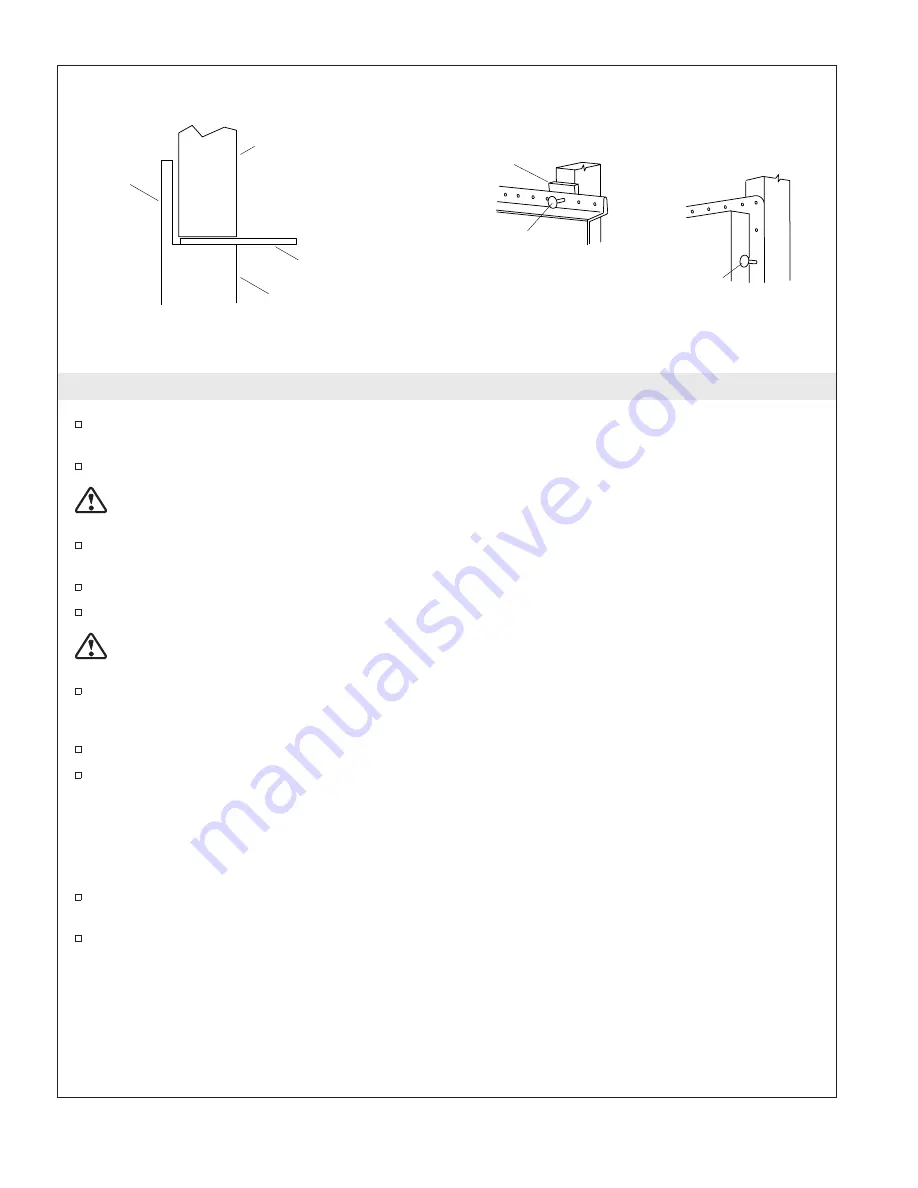
9. Secure the Wall Surround
Align the plumbing end wall with the plumbing fixtures and install the back wall by engaging the
wall interlocks and wall tabs.
If still installed, remove the temporary nail at the top of the back wall flange.
CAUTION: Risk of property damage.
Wall surrounds must rest within 1/32
″
(1 mm) (the thickness of
a credit card) from the receptor to ensure proper water management and to prevent leakage.
Check to be sure all walls are seated firmly on the receptor and that the back wall interlocks are
engaged.
Verify that the front edges of the end walls are flush with the front edge of the receptor.
If a gap exists, pull the end walls slightly forward to eliminate the gap.
CAUTION: Risk of property damage.
If using screws rather than nails, do not over-tighten the screws.
Excessive tightening can damage the flange.
Use large head roofing nails or flat head screws at the dimples on the nailing-in flange to secure the
wall surrounds to the studs. Secure both end walls first starting at the bottom and moving up the
sides.
Install a minimum of three fasteners along the vertical nailing-in flanges.
Secure the flanges across the top of the wall panels at every stud location.
Finish the Installation of the Wall Surround
NOTE:
A gap between the edge of the wall surround and the finished wall, when sealed, helps to reduce
the possibility of water seeping into the wall material. Apply the water-resistant wall material over the
nailing–in flanges leaving a 1/8
″
(3 mm) gap between the wall surround and the wall material.
Cover the framing around the wall surrounds and the shower receptor with water-resistant wall
material.
Seal the joints around the perimeter of the shower unit and the finished wall material with silicone
sealant. Allow the sealant to cure according to the manufacturer’s instructions.
Roofing Nail
or Screw
Roofing Nail
or Screw
Shim if
necessary.
Bath Rim
Credit Card
Wall Surround
Nailing
Flange
Sterling
13
1016220-2-C




































